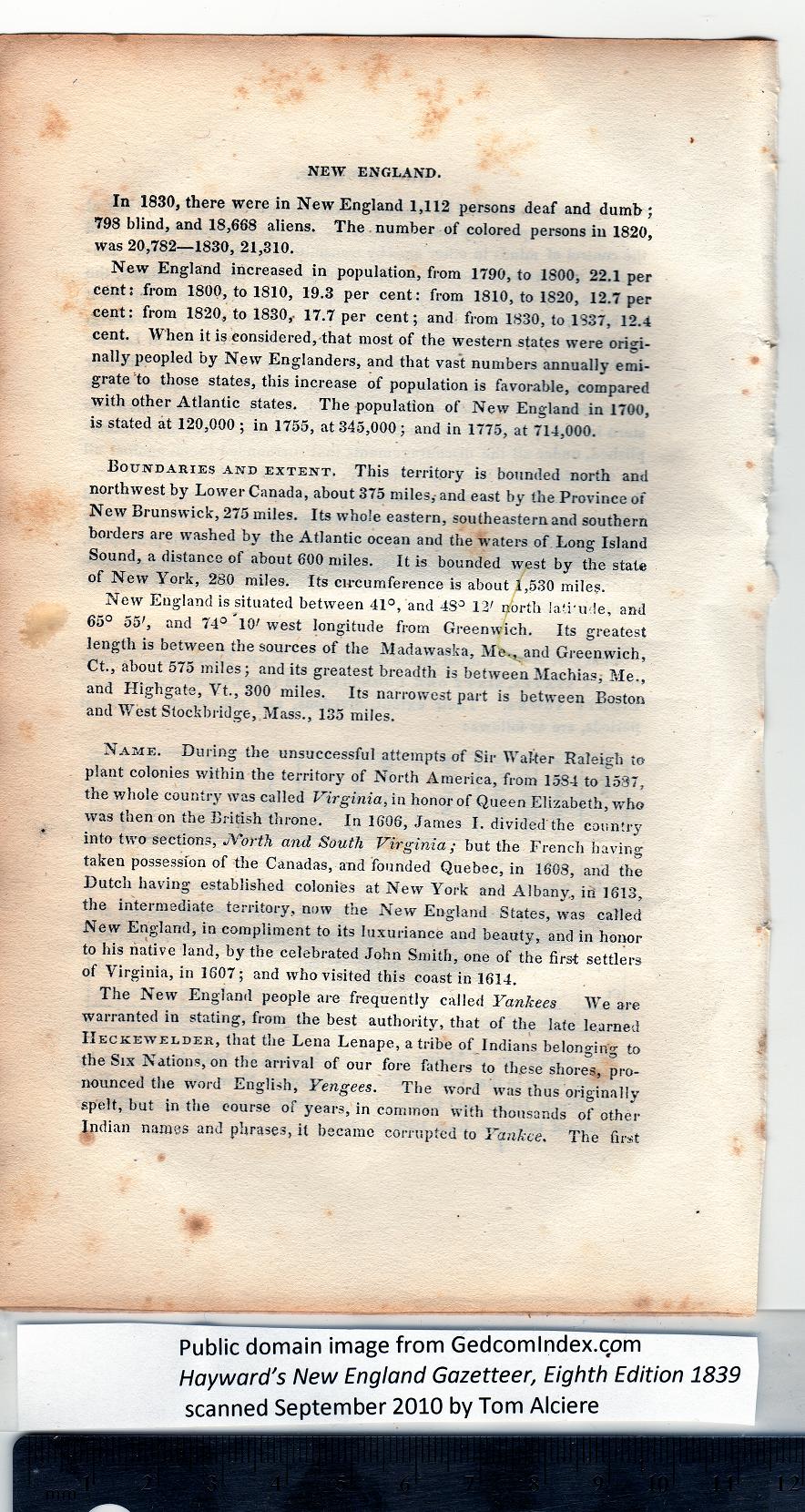|
NEW ENGLAND.
In 1830, there were in New England 1,11*2 persons deaf and dumb;
798 blind, and 18,668 aliens. The number of colored persons in 1820,
was 20,782—1830, 21,310.
New England increased in population, from 1790, to 1800, 22.1 per
cent: from 1800, to 1810, 19.3 per cent: from 1810, to 1820, 12.7 per
cent: from 1820, to 1830,. 17.7 per cent; and from 1830, to 1337, 12.4
cent. When it is considered, that most of the western states were origi-
nally peopled by New Englanders, and that vast numbers annually emi-
grate to those states, this increase of population is favorable, compared
with other Atlantic states. The population of New England in 1700,
is stated at 120,000 ; in 1755, at 345,000; and in 1775, at 714,000.
Boundaries and extent. This territory is bounded north and
northwest by Lower Canada, about 375 miles, and east by the Province of
New Brunswick, 275 miles. Its whole eastern, southeastern and southern
borders are washed by the Atlantic ocean and the waters of Long Island
Sound, a distance of about 600 miles. It is bounded west by the state
of New York, 280 miles. Its circumference is about 1,530 miles.
New England is situated between 41°, and 4S° 12' north lati'ude, and
65° 55', and 74° 10' west longitude from Greenwich. Its greatest
length is between the sources of the Madawaska, Me.^and Greenwich,
Ct., about 575 miles; and its greatest breadth is between Machias, Me.,
and Highgate, Vt., 300 miles. Its narrowest part is between Boston
and West Stockbridge, Mass., 135 miles.
Name. During the unsuccessful attempts of Sir Walter Raleigh to
plant colonies within the territory of North America, from 1584 to 1537,
the whole country was called Virginia, in honor of Queen Elizabeth, who
was then on the British throne. In 1606, James I. divided the country
into two sections, North and South Virginia; but the French having
taken possession of the Canadas, and founded Quebec, in 1608, and the
Dutch having established colonies at New York and Albany, in 1613,
the intermediate territory, now the New England States, was called
New England, in compliment to its luxuriance and beauty, and in honor
to his native land, by the celebrated John Smith, one of the first settlers
of Virginia, in 1607; and who visited this coast in 1614.
The New England people are frequently called Yankees AVe are
warranted in stating, from the best authority, that of the late learned
Heckewelder, that the Lena Lenape, a tribe of Indians belonging to
the Six Nations, on the arrival of our fore fathers to these shores, pro-
nounced the word English, Yengees. The word was thus originally
spelt, but in the course of years, in common with thousands of other
Indian names and phrases, it became corrupted to Yankee. The first
PREVIOUS PAGE ... NEXT PAGE
This page was written in HTML using a program written in Python 3.2 and image-to-HTML text generated by ABBYY FineReader 11, Professional Edition.
|
